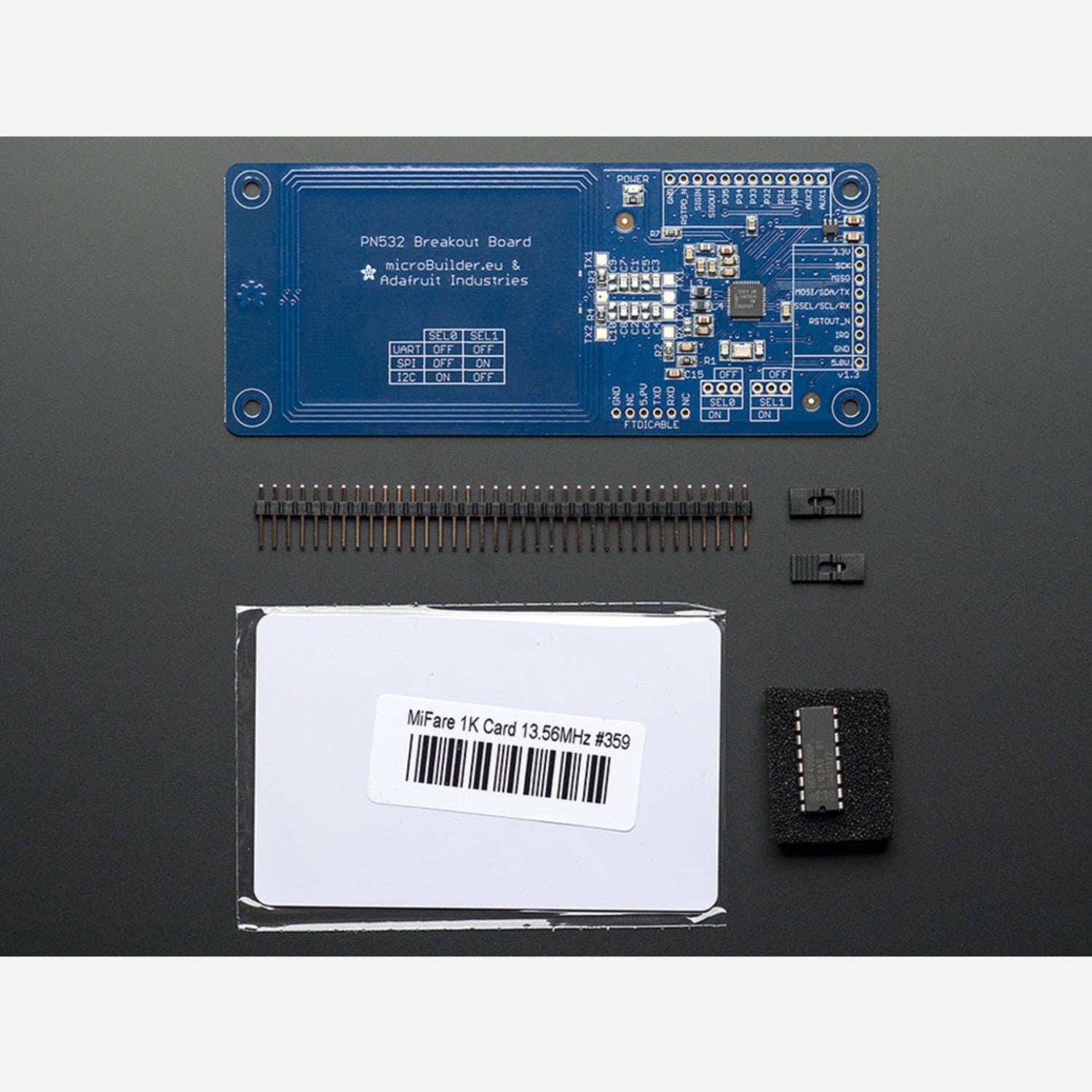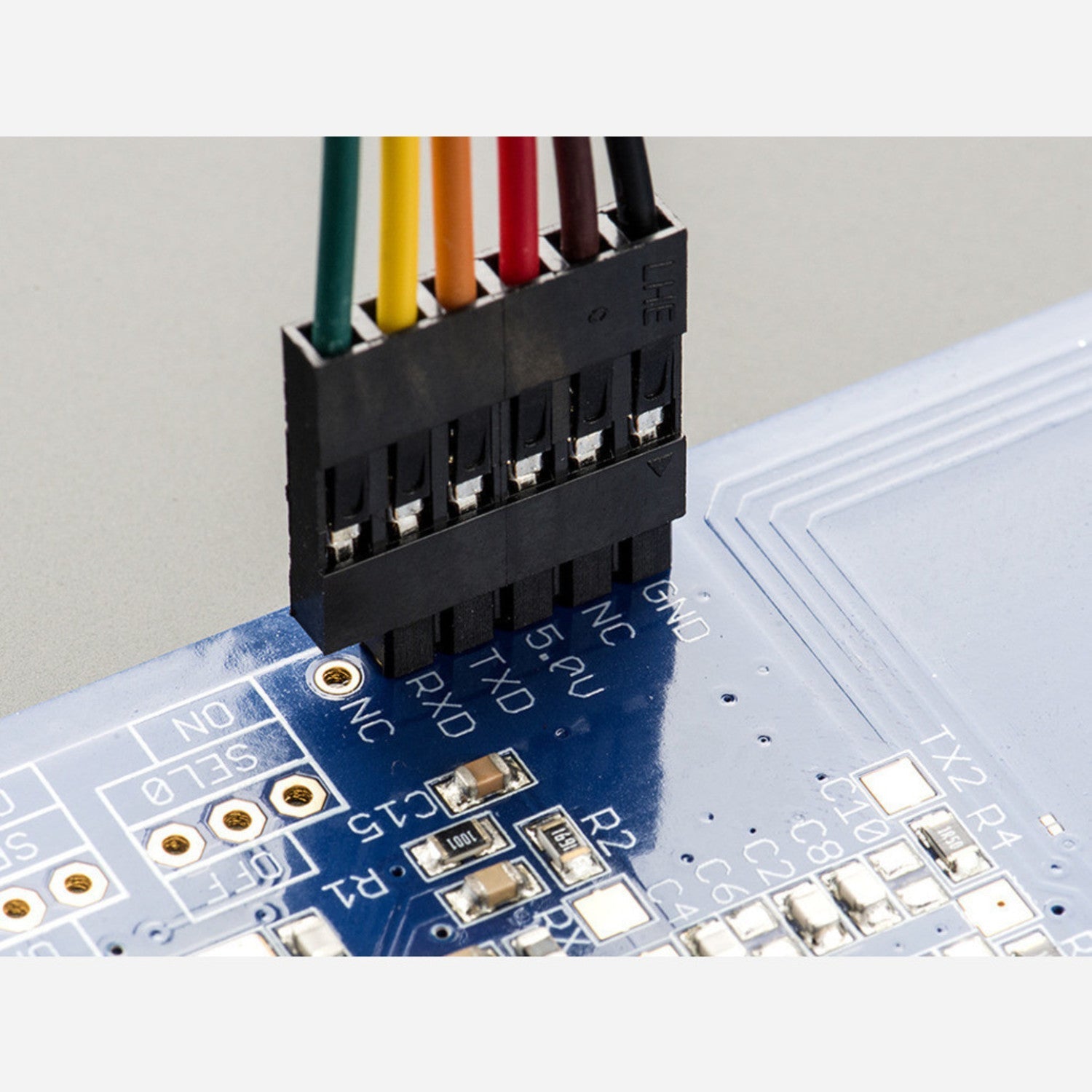The PN532 is the top - choice NFC chip, embedded in almost every NFC - enabled phone or device. It's a multi - tasker! It can read and write tags and cards, communicate with phones for payment processing, and even act like an NFC tag. If you're into embedded NFC projects, this is the chip you need. NFC, or Near Field Communications, is a simple way for nearby devices to talk to each other, like a short - range, authentication - free Bluetooth. It extends RFID capabilities, letting you do all RFID tasks and more, such as two - way communication with cell phones. You can use it for RFID - tag projects as it can read and write tags. It works well with several tags we offer and any NFC/RFID Type 1 thru 4 tag. The PN532 is highly flexible. You can use 3.3V TTL UART at any baud rate, I2C, or SPI for communication. It's well - supported by libnfc. Just plug in an FTDI cable and use the FTDI serial port device to communicate from any Linux/Mac/Windows computer. The board comes with an onboard power LED, 3.3V regulator, and an FTDI header. What's in the package? A PN532 breakout board with a tuned 13.56MHz stripline antenna, 0.1' header, 2 jumpers/shunts, a 4050 level shifter chip, and a 13.56MHz 1K card! You can get more tags from us too.




Using the PN532 NFC/RFID controller breakout board is easy. First, connect it to your device. You can choose to use 3.3V TTL UART at any baud rate, I2C, or SPI based on your needs. If you're using it with a computer, plug in an FTDI cable and use the FTDI serial port device. The onboard power LED will show if it's getting power. When working with tags, simply bring the tag close to the board's antenna to read or write data. For projects involving communication with phones, make sure your phone has NFC enabled. As for maintenance, keep the board clean and dry. Avoid exposing it to extreme temperatures or moisture. If you need more tags, you can get them from us. That's all you need to know to start using your PN532 board.